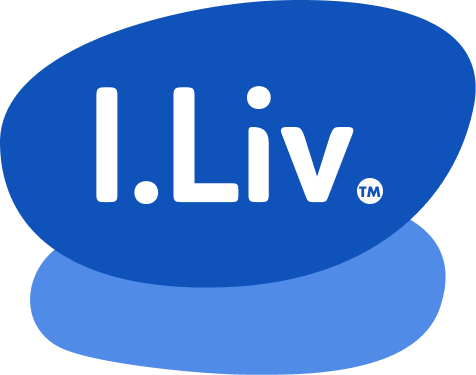In today’s rapidly evolving workplace, the pursuit of productivity is reshaping the concept of the “Future of Work” as a central theme among businesses worldwide. As organizations strive to enhance productivity, there’s an equally growing recognition of the critical importance of employee well-being. This shift is driven by a deeper understanding that high productivity must be sustainable and not come at the expense of employee health.
This article explores how modern companies are navigating this delicate balance, aiming to maintain high productivity levels while ensuring that the well-being of their employees is safeguarded. By integrating innovative practices and technologies, businesses are finding ways to optimize work processes and create environments that promote a healthy work-life integration, proving that productivity and well-being can coexist and reinforce one another in a mutually beneficial cycle.
The Evolving Workplace Dynamics
The traditional workplace model, characterized by long hours and a fixed location, is undergoing a profound transformation. Driven by innovations in technology and shifts in employee expectations, there is a growing focus on creating more flexible work environments.
This shift is not just about where or when work happens but also about how it impacts employee productivity and well-being. Today, businesses are recognizing that flexibility can lead to increased job satisfaction and efficiency, as employees are able to work in ways that best suit their personal and professional lives.
Moreover, this change is also about redefining the nature of work itself. Companies are increasingly adopting policies that prioritize outcomes over output, emphasizing the quality of work produced rather than the quantity of hours logged. Such policies not only enhance productivity but also contribute to a healthier workplace by reducing burnout and promoting a better balance between personal and professional responsibilities. As a result, the evolving workplace is becoming more dynamic, with a stronger emphasis on creating spaces and cultures that support a diverse range of working styles and personal needs, ultimately fostering a more engaged and motivated workforce.

Key Trends Influencing Productivity and Well-being
Remote and Hybrid Models: The adoption of remote and hybrid work models has shown significant effects on productivity. These arrangements offer employees flexibility, reducing commute times and providing the opportunity to design a workday that fits their personal and professional lives. However, to make these models sustainable, companies must invest in digital tools that support collaboration and ensure a healthy work-life balance.
Technological Integration: Advanced technologies like AI and automation are reshaping tasks, reducing manual workload, and allowing employees to focus on more meaningful aspects of their jobs. While these advancements can boost productivity, they also require new skills and adaptation, which can affect employee well-being if not managed correctly. Tools like the I.Liv Performance Program and I.Liv app support companies and their employees in succeeding in this new tech landscape.
Employee Autonomy: Granting employees more control over their work not only boosts morale but also enhances productivity. Autonomy encourages a sense of responsibility and can lead to higher job satisfaction and lower stress levels.
Focus on Mental Health: More organizations now recognize the importance of mental health and are implementing programs to support it. This includes providing access to mental health resources, training managers to recognize signs of burnout, and fostering a workplace culture that promotes mental well-being.
Challenges to Balancing Productivity and Well-being
Maintaining Engagement: In remote settings, keeping employees engaged and connected to the team and company culture can be challenging. Without regular interaction, employees might feel isolated, impacting their productivity and overall well-being.
Overworking Tendencies: With the blurring lines between home and work, employees often find themselves working longer hours than before. Organizations need to encourage work-life boundaries to prevent burnout.
Data Security and Privacy: As work becomes more digitized, ensuring the security and privacy of employee data becomes crucial. Concerns over data breaches can cause stress and detract from the focus on core work tasks. Companies must prioritize tools and platforms that demonstrate a strong commitment to data security and user privacy. At I.Liv, safeguarding our clients’ and users’ information is a core principle, reflecting our relentless focus on data security.
The Role of Leadership in Shaping the Future of Work
Leaders play a crucial role in balancing productivity and well-being, serving as pivotal figures in shaping the future of work. By setting clear expectations, providing the necessary tools and resources, and leading by example regarding work-life balance, leaders can create an environment where productivity and well-being are synergistically enhanced. Effective leadership involves not only understanding the strategic productivity objectives of an organization but also recognizing the human elements that drive those objectives. This means implementing policies that support flexible working conditions, encourage regular breaks, and foster an open dialogue about mental health.
Additionally, leaders must commit to continuous learning and adaptation to keep pace with evolving workplace trends. They should invest in training that helps managers understand the nuances of well-being and employee engagement, equipping them with the skills to support their teams effectively. By actively promoting a culture that values both achievement and well-being, leaders can cultivate a workforce that is both highly productive and deeply committed to the organization’s success. This dual focus not only drives better business outcomes but also attracts and retains top talent, positioning the company as a leader in the competitive landscape of the future workplace.
The future of work requires a nuanced balance between achieving high productivity and maintaining employee well-being. As workplace trends evolve, companies that successfully prioritize both aspects are likely to foster not only a healthier work environment but also experience sustained growth and success. This ongoing journey demands that organizations adapt to new practices and continuously learn from global trends.
Embracing innovations in workplace management and employee support can equip organizations to better meet the challenges of tomorrow. By integrating strategies that enhance both productivity and well-being, companies can set a new standard for the modern workplace, ensuring they remain resilient and competitive in an ever-changing economic landscape, with I.Liv providing the essential tools and support to achieve these goals effectively. See how we can help Book Your Exploratory Call Now

